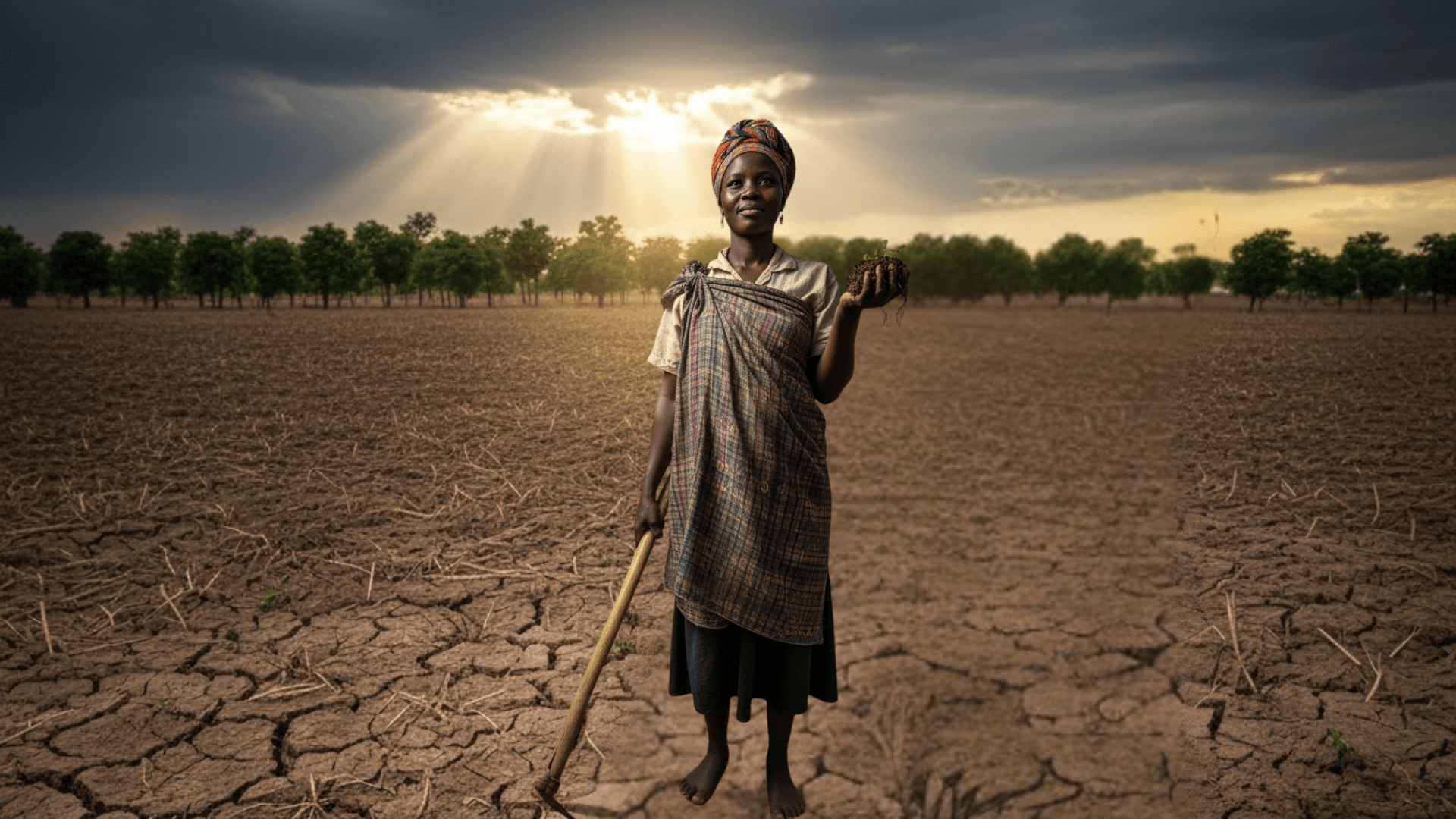African smallholders use ancient and digital tech to secure crops and food
By Brian Ochieng Akoko, Reporter | Nakuru City – Kenya.
The climate crisis is not an abstract threat in Africa. It is a lived reality. It manifests as prolonged droughts. It appears as erratic rainfall patterns. It brings devastating floods. These changes directly impact agriculture.
They threaten the livelihoods of millions of smallholder farmers. The challenge is immense. The continent must feed its rapidly growing population in an environment of increasing unpredictability.
African farmers are not waiting for global solutions. They are innovating on the ground. They are combining centuries-old wisdom with modern climate-smart technologies.
Their focus is on resilience. They are building systems that can withstand the shocks of the changing climate. This is a grassroots revolution in agricultural adaptation.
It is a fight to protect food sovereignty. This movement is the Desert’s Defense. It is a testament to the ingenuity and tenacity of Africa’s farming communities.
Revival of Ancient Water Harvesting

One of the most effective adaptation strategies involves water management. Farmers are reviving ancient methods of water harvesting. They are adapting them for modern scale.
In semi-arid regions, the focus is on capturing every drop of rainfall. Techniques like zai pits are making a major comeback. These are small planting basins dug into the soil. The pits collect rainwater. They also concentrate organic fertilizer.
This allows crops to survive longer dry spells. In Ethiopia and other highland areas, farmers are building terraces and check dams. These structures slow down runoff. They prevent soil erosion. They allow water to infiltrate the ground and recharge local aquifers.
This localized water management is critical. It reduces reliance on distant, large-scale irrigation projects. It gives the farmer direct control over their water supply. This enhances their sense of security. These methods are low-cost.
They use local materials and labour. This makes them highly scalable and sustainable. The revival of this ancient knowledge is a powerful act of adaptation. It is a recognition that the past holds keys to the future.
Technology: Climate Data in the Palm of the Hand
Modern technology is a vital partner in this fight for resilience. Mobile phones are now used as precision farming tools. They provide tailored climate information.
Farmers receive localized weather forecasts via SMS or simple mobile apps. These forecasts are often specifically tailored for their micro-region. They advise on the optimal time for planting and weeding. This data allows farmers to make informed decisions.
It reduces the risk of crop failure due to unexpected weather events. Another key technological tool is the use of satellite imagery. NGOs and agricultural extension workers use this data.
They monitor soil moisture levels and vegetation health. They can then provide early warnings to farmers in areas facing acute drought risk. The development of high-yield, drought-resistant seeds is also critical.
These are often hybrids of local varieties. These seeds are designed to mature quickly. They can maximize the use of short, unpredictable rainfall windows.
This combination of low-tech, traditional wisdom and high-tech climate data is highly effective. It is the definition of climate-smart agriculture. It empowers the farmer. It turns uncertainty into manageable risk.
Agroforestry and Soil Health
The defense against drought begins with the soil itself. Healthy soil retains water like a sponge. Farmers are moving rapidly towards agroforestry. This practice integrates trees and shrubs into the crop and pasture land.
Trees provide shade. They reduce water evaporation from the soil. Their deep roots improve soil structure. They also add vital nitrogen and organic matter to the soil. This reduces the need for external fertilizer.
The trees themselves can be a source of income. They provide fruit, fodder, and firewood. The adoption of conservation agriculture practices is also widespread. This involves minimum tillage and permanent soil cover.
By leaving crop residue on the surface, farmers protect the soil from the sun and wind. They mimic the natural processes of the forest floor. This focus on soil health is a long-term investment.
It builds resilience over generations. The work is often led by women’s co-operatives. They are the primary custodians of the land and its long-term health.
Their dedication is creating a literal Green Belt of resilience across the continent. The farmer’s struggle is the world’s struggle. Their success in adapting to climate change is a global victory for food security.




Daj svoj stav!
Još nema komentara. Napiši prvi.